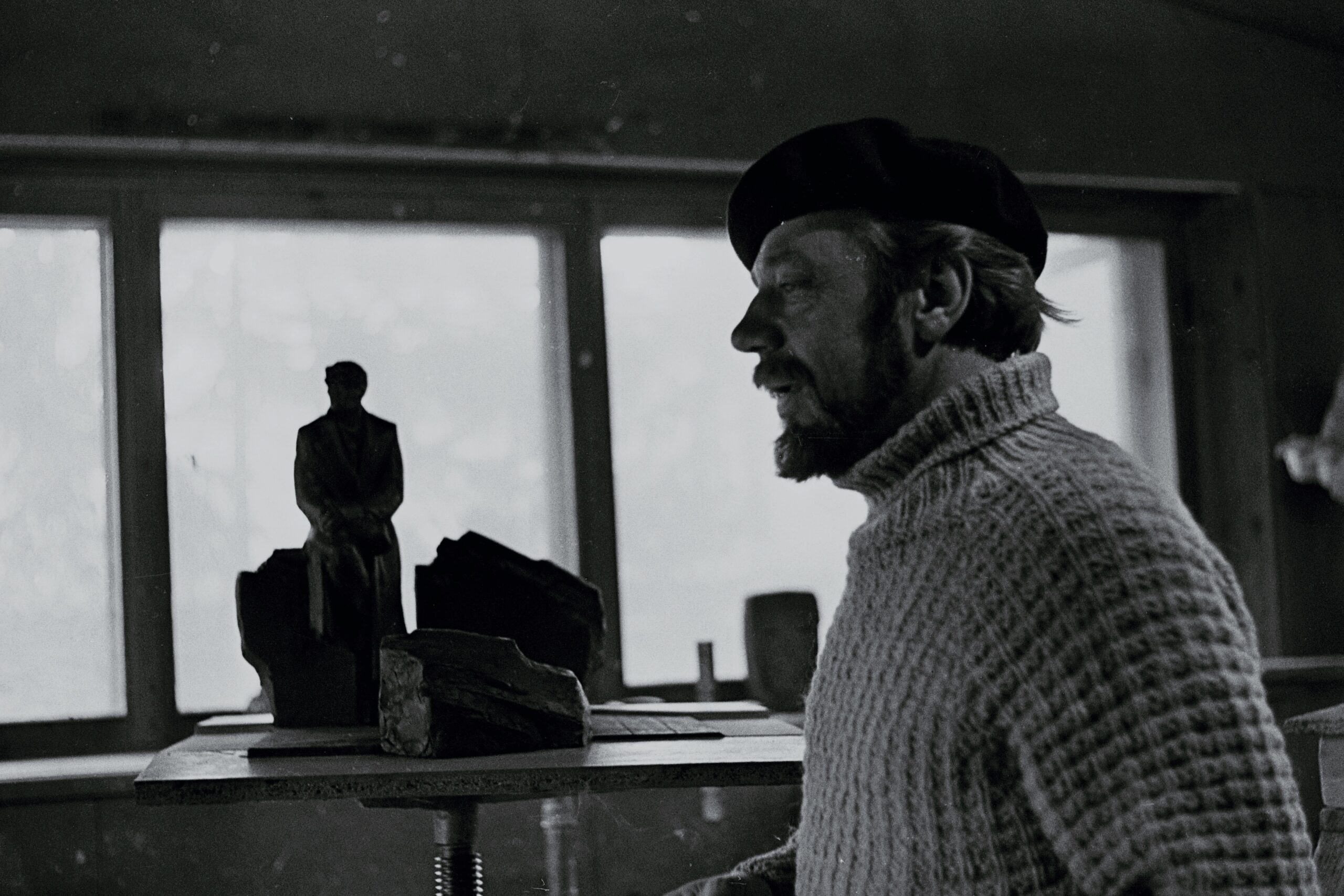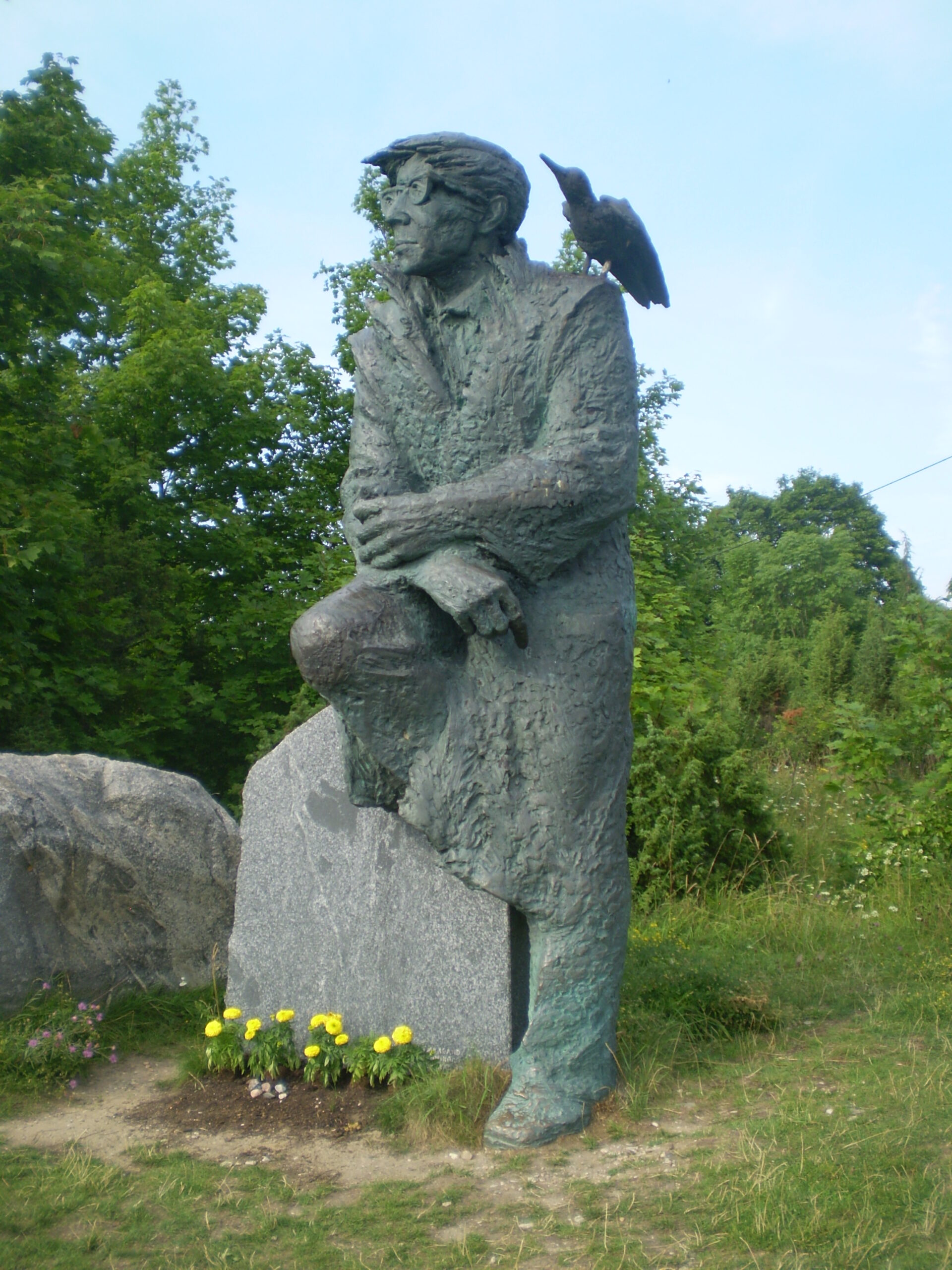Statue of Juhan Smuul in Muhumaa
Year of completion: 1990/2006
Address: Saare County, Koguva village
Sculptor Tõnu Maarand, architect Rein Tomingas
Bronze, granite
Height 3,5 metres, side width from the knee to the back 1,4 metres
Saare County, Koguva village
Cultural monument no. 2241
In a 1982 monument competition, sculptor Tõnu Maarand was granted first prize with his design for the statue of famous author Juhan Smuul. The rest of the piece’s history, however, becomes engaging due to its numerous unfortunate episodes. Shortly after its completion, the bronze seagull was stolen from the statue in Kadrioru Park, and that happened four a total of four times in the course of a few years. There was even an attempt to steal the statue with a crane in 1997, as a consequence of which the statue was extensively damaged and needed thorough restoration. After that, the statue was no longer brought back to Kadrioru Park for fear of metal thieves.
Tallinn City Council planned to exhibit the statue, which was stored away, on J. Smuuli tee in Lasnamäe, but the idea did not garner much support. Especially against the idea were residents of Muhu. The artist’s suggestion to move the statue to Koguva Village in Muhu County, where the author himself was from, could not be carried out due to lack of funding. Finally, on the 14th of June 2006, Tallinn City Council sold the statue of Juhan Smuul for one Estonian kroon to Muhu Rural Municipality, who moved the statue with their own resources.
Despite its rather stylised surface modelling and robust texture, the statue still seems anatomically correct. On one hand, the wide-stroked surface treatment is in accord with Smuul’s own literary style and amusing lifestyle, on the other, the courage of the modelling fits together with the overall sculptural scene of the 1980s and 1990s. The emphatically sharp corners and the crumbling of the form that looks as if blown by the wind creates a powerful and dynamic experience upon encountering the statue. With such windy modelling, the statue fits perfectly between Koguva’s bending junipers.
Sculptor Tõnu Maarand had already depicted actors and writers in his material before. Immortalising cultural figures definitely has a certain documental value to it, but even more significant is the existence of such depiction in the first place, just like any science or theatre in one’s native tongue is an asset on its own.
Enriko Mäsak








